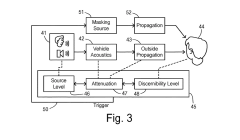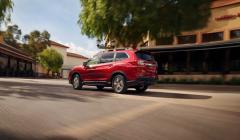世界汽车用钢联盟(世界钢铁协会下属汽车用钢项目)支持的汽车质量对标研究项目最新报告表明,汽车采用钢材实现轻量化仍有潜力。本次研究名为“2017年汽车质量对标研究”,为汽车生产企业提供了新型的、更精确的汽车质量对标方法。通过统计回归分析,汽车生产企业能够:1) 更加精确地进行汽车质量对标---因为这种对标方法揭示了各种汽车零部件的轻量化情况; 2) 有助于为未来汽车提供更加高效的燃油经济性设计方案(或温室气体减排策略)。

2017年汽车质量对标研究报告显示,即使研究团队针对较新车型进行分析(主要是2011-2015年车型,对比此前分析的2001-2012年车型),他们仍然发现相同的轻量化趋势。
本次研究的零部件所用的材料包括钢材、铝材以及钢铝混合材料。由于碳纤维和镁制这类零部件数量有限,无法进行有效的统计学分析,因此没有列入考虑。本次研究所关注的是先前未曾分析过的较新车型,并且允许在一定期间内进行比较,一方面测试统计模型的稳定性,一方面探寻可能存在的汽车重量与时间之间的发展趋势。


BRUSSELS, 28 JUNE 2017 – Findings in an update to an Auto Mass Benchmarking study sponsored by WorldAutoSteel, the automotive group of the World Steel Association, continue to be positive for steel lightweighting. The study, Automotive Mass Benchmarking 2017, provides automakers with a new, more accurate way to benchmark the mass of vehicles. By way of statistical regression analysis, automakers can 1) benchmark vehicle mass more accurately since this methodology reveals how efficient (or inefficient) vehicle components are; and 2) facilitate even greater fuel-efficient designs (a greenhouse gas reduction strategy) for future vehicles.
“Upon completion of this third update to the study, the research team found that there continues to be a great deal of opportunity for design optimization and lightweighting with steel, even with grades currently available,” said Russ Balzer, Technical Director, WorldAutoSteel.
The 2017 update to Auto Mass Benchmarking showed that even though the team of researchers examined newer vehicle models (2011-2015 compared to 2001-2012 previously), they observed the same lightweighting trends.
“The most obvious trend is the wide mass range among the steel components in the database,” noted Balzer. “For instance, steel door components of the same size and functionality range in weight from the heaviest at 22 kg to the most efficient at 15 kg, a 44% difference. We see this as an opportunity for mass savings with existing steel grades and manufacturing technologies, and even more savings with the new grades of steel that are continually being developed.”
The study included components made of steel, aluminium and steel/aluminium combinations. Carbon fibre or magnesium components could not be considered due to the limited number of these available for good statistical analysis. This update to the study focused on newer vehicles not previously analyzed, allowing comparisons over time to test both the robustness of the statistical models, and to detect any time dependent mass trends which may be present.
Balzer explained that statistical regression analysis differs from traditional benchmarking methods in that it allows comparison of a new design with an entire database of vehicles over a range of sizes and segments, rather than comparisons of just one or two vehicles (typical auto benchmarking methodology). Statistical regression analysis also differs from what automakers commonly use today in that it reveals how mass efficient (or inefficient) the vehicle component design is among like components in the database. Current methods do not.
“Statistical benchmarking opens a whole database of today’s vehicles to the benchmarking process,” said Dr. Don Malen, University of Michigan, developer of the methodology and who completed this 2017 update along with benchmarking database experts A2Mac1. “With it, engineers can identify better, more realistic targets, saving time and money.”
Technical fact findings to Auto Mass Benchmarking 2017 include:
• The study uses the A2Mac1 vehicle tear-down database of approximately 250 model 2011-2015 vehicles and statistical regression analysis to isolate mass-efficient designs and compare lightweighting. A component structure that is identified as efficient is one that stands out statistically as much lighter than others of its kind of the same size, structural performance and material. For efficient steel, this could be due to the use of Advanced High-Strength Steels, and/or because of a fully optimized design. Fifteen individual components were analyzed and results included in the study report.
• Mass efficiency of today’s steel designs vary drastically. This benchmarking method once again revealed a broad disparity in levels of mass efficiency among the steel component designs in what should be similar mass subsystems. For example, steel body structures of the same size (7.5m2) differed in weight from the heaviest to the most efficient by as much as 100 kg.
• The 40% mass savings “rule of thumb” often quoted as the standard for aluminium lightweighting capability, is rarely achieved, especially when aluminium components are compared to efficiently designed steel components of similar size, the study showed.
• When compared to an efficient steel design, the mass savings gap with aluminium significantly reduces. A comparison of front bumpers shows just a 19 percent savings, comparing efficient steel vs. efficient aluminium. The efficient steel bumper was 27 percent lighter than the average steel bumper. Hatchback doors showed just a 2 percent mass difference between aluminium and steel efficient designs. This was seen in all subsystems in the study. This lightweighting can be achieved at up to three times less cost to manufacture.
• Aluminium component mass reduction does not fully carry over to the system. In nearly every component reviewed, a significant portion of the mass savings that was achieved with an aluminium structure was lost in the system. The average aluminium hatchback exceeded the mass of the average steel system. These systems are particularly those components that directly communicate with the passenger compartment since they require additional noise, harshness and vibration (NVH) mitigation. A follow up door study1 to investigate this phenomenon revealed that the biggest mass additives to the aluminium door subsystems was additional NVH sound damping materials and added structure such as hinge reinforcements.
“While we see steel lightweighting by OEMs today achieving great strides in lightweighting at affordable costs, the study shows that even more lightweighting can be realized through design optimization and the application of advanced steels and steel technologies,” concluded Balzer.
The Automotive Mass Benchmarking 2017 study report along with the accompanying Side Door: Structure Mass / System Mass study executive summary, are available for free download by clicking the Download on this page’s right column.




